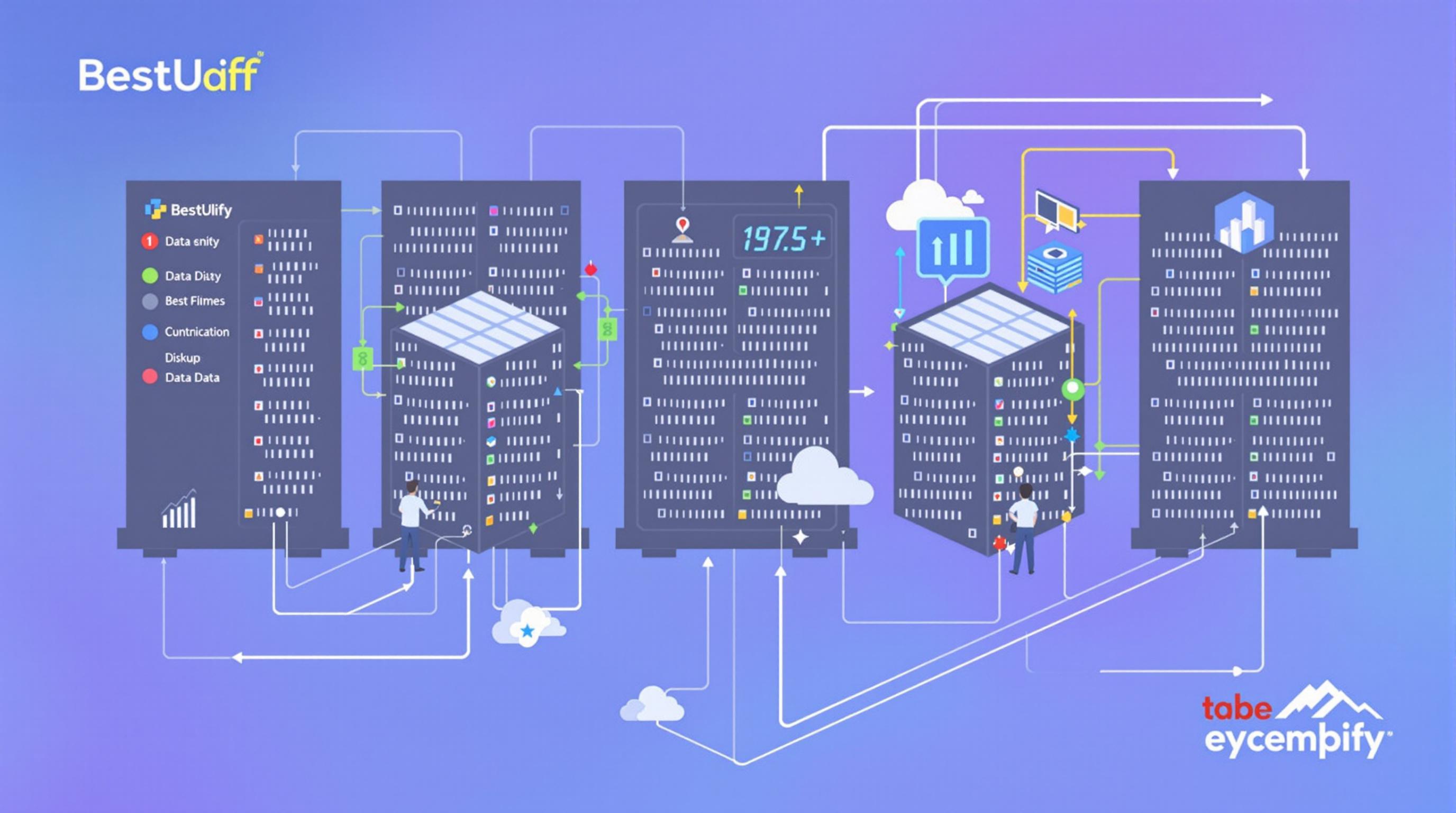Related Articles
- The Role of Quantum Encryption in Transforming Legacy Data Protection Practices for Businesses
- Top 6 AI-Powered Subscription Platforms Transforming Product Access and Affordability Since 2019
- Unseen Pitfalls: How Cognitive Overload in Finance Audits Undermines Checklist Effectiveness and Decision Quality
- The Silent Impact of Global Fiscal Shifts on Local Tax Date Practices No One’s Talking About
- How Cultural Narratives Shape Personal Budgeting: Unseen Influences Behind Financial Template Choices
- Top 6 Underrated Payment Tools Released Since 2019 Changing How Stores Handle Transactions
5 Lesser-Known Psychological Factors Driving Executive Decisions in Business Data Backup Strategies
5 Lesser-Known Psychological Factors Driving Executive Decisions in Business Data Backup Strategies
5 Lesser-Known Psychological Factors Driving Executive Decisions in Business Data Backup Strategies
1. Anchoring Bias
Anchoring bias occurs when decision-makers rely heavily on the first piece of information they receive when making choices. In the context of executive decisions regarding data backup, initial cost estimates or past experiences with a specific technology can unduly influence strategy.
For example, if an executive’s first exposure to a backup solution involved significant upfront expenses, they may anchor on this cost, overlooking more cost-effective or scalable options available in the market today.
This bias can result in suboptimal backup strategies, as anchoring inhibits objective evaluation of evolving technologies and risks associated with downtime or data loss (Tversky & Kahneman, 1974).
2. Loss Aversion
Loss aversion refers to the tendency to prefer avoiding losses rather than acquiring equivalent gains. Within backup strategy decisions, executives may prioritize avoiding data loss to an extreme, sometimes spending disproportionately on redundant or complex backup systems.
While mitigating loss is critical, an exaggerated focus on potential loss may divert resources from other essential IT functions or innovation initiatives, creating an imbalance in organizational priorities.
Understanding this psychological factor can help executives design balanced strategies that weigh risks against benefits, fostering sustainable investment in data protection (Kahneman & Tversky, 1979).
3. Overconfidence Effect
The overconfidence effect causes some executives to overestimate their ability to predict or control outcomes related to data backup and recovery. This may lead to underinvestment in contingency planning or testing backup systems thoroughly.
Believing that current measures are sufficient without rigorous validation can expose businesses to unforeseen vulnerabilities, such as ransomware attacks or natural disasters that compromise data availability.
Recognizing overconfidence helps promote more rigorous audits and realistic risk assessments, improving data resiliency over time (Moore & Healy, 2008).
4. Herd Mentality
Herd mentality refers to executives adopting data backup strategies primarily because similar companies or competitors have chosen them. This can overshadow individual organizational needs or risk profiles.
While industry trends can offer valuable insights, blind conformity sometimes results in misaligned investments or technologies that do not suit a company’s specific scale or sector.
Encouraging tailored analysis rather than reliance on collective behavior strengthens strategic fit and ensures backup solutions align with unique operational demands (Banerjee, 1992).
5. Status Quo Bias
Status quo bias is the preference to maintain existing conditions rather than making changes, even when improvements are evident. Executives might resist upgrading backup architectures due to perceived risks or comfort with current processes.
This resistance delays the adoption of modern backup technologies such as cloud-based solutions or automation, potentially increasing vulnerability to data loss and recovery delays.
Understanding this bias encourages leadership to actively seek innovation and incremental change instead of clinging to outdated systems (Samuelson & Zeckhauser, 1988).
6. Confirmation Bias
Confirmation bias leads executives to favor information supporting their preconceived notions about backup solutions while disregarding contradictory data. This can reinforce ineffective strategies.
For instance, if an executive believes a particular vendor provides the best backup service, they may ignore evidence of better performance or pricing from competitors.
Mitigating confirmation bias involves encouraging diverse perspectives and objective data analysis when selecting or reviewing backup strategies to optimize decision quality (Nickerson, 1998).
7. Availability Heuristic
The availability heuristic causes executives to judge the probability of events based on how easily examples come to mind. Recent high-profile data breaches may prompt sudden changes in backup policies, even if the actual risk remains low.
This can lead to hurried or overly expensive decisions, neglecting a strategic balance based on comprehensive risk assessment instead of isolated incidents.
Balancing anecdotal impact with statistical evidence supports better-informed, proportionate backup investments (Tversky & Kahneman, 1973).
8. Sunk Cost Fallacy
Sunk cost fallacy makes executives continue investing in backup technologies or processes because of prior resource expenditures, even if better alternatives exist.
Organizations might persist with outdated backup infrastructure due to previous capital invested, missing opportunities to improve reliability and cost-efficiency.
A clear understanding of sunk costs encourages decision-makers to evaluate future benefits objectively rather than being anchored by past investments (Arkes & Blumer, 1985).
9. Cognitive Dissonance
Cognitive dissonance arises when executives face conflicting beliefs or information about their backup strategies, leading to discomfort and justifications to reduce inconsistency.
An executive might dismiss warning signals about backup failures to maintain confidence in their decisions, delaying necessary corrective actions.
Recognizing this factor facilitates openness to change and honest appraisal of backup system effectiveness to prevent prolonged risks (Festinger, 1957).
10. Social Proof
Social proof influences executives to conform to perceived best practices endorsed by authoritative figures or widespread adoption in their industry.
While social proof can guide decisions, reliance on it without individual assessment risks adopting backup solutions unsuited to specific organizational contexts.
Balancing social proof with internal needs analysis ensures executive decisions align with actual operational realities, not just popularity (Cialdini, 2001).
References:
Arkes, H. R., & Blumer, C. (1985). The psychology of sunk cost. Organizational Behavior and Human Decision Processes, 35(1), 124-140.
Banerjee, A. V. (1992). A simple model of herd behavior. The Quarterly Journal of Economics, 107(3), 797-817.
Cialdini, R. B. (2001). Influence: Science and practice. Allyn & Bacon.
Festinger, L. (1957). A theory of cognitive dissonance. Stanford University Press.
Kahneman, D., & Tversky, A. (1979). Prospect theory: An analysis of decision under risk. Econometrica, 47(2), 263-291.
Moore, D. A., & Healy, P. J. (2008). The trouble with overconfidence. Psychological Review, 115(2), 502-517.
Nickerson, R. S. (1998). Confirmation bias: A ubiquitous phenomenon in many guises. Review of General Psychology, 2(2), 175-220.
Samuelson, W., & Zeckhauser, R. (1988). Status quo bias in decision making. Journal of Risk and Uncertainty, 1(1), 7-59.
Tversky, A., & Kahneman, D. (1973). Availability: A heuristic for judging frequency and probability. Cognitive Psychology, 5(2), 207-232.
Tversky, A., & Kahneman, D. (1974). Judgment under uncertainty: Heuristics and biases. Science, 185(4157), 1124-1131.




